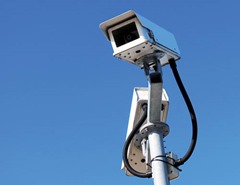Crime in numbers
 agendaNi examines the trends for offending in Northern Ireland, which indicate a general decrease in crime, a rise in recorded violent crime, and lower reoffending rates compared to Great Britain.
agendaNi examines the trends for offending in Northern Ireland, which indicate a general decrease in crime, a rise in recorded violent crime, and lower reoffending rates compared to Great Britain.
Recorded crime figures
The PSNI publishes levels of recorded crime for each financial year, with the most recent being 2013-2014. The number of homicides in Northern Ireland has varied between 20 and 30 per year since 2005. This compares with 30-50 per year between 2000 and 2005. In each of the two most recent years,
17 murder cases and three manslaughter cases were recorded.
Violence with injury offences peaked at 18,127 in 2006-2007 but fell markedly to 15,934 in the next year. A small further decrease followed – down to 14,136. This trend mainly reflects a fall in the number of actual bodily harm assaults but police are investigating a consistent number of grievous bodily harm cases: around 800 per year.
Violence without injury has increased year-on-year since 2007, rising to 18,246 cases. This includes minor assaults, threats and harassment. The number of recorded sexual offences rose from 1,828 to 2,234 between 2011-2012 and 2013-2014. In the latter year, this included 506 rapes and 1,032 sexual assaults.
Robberies have decreased from a recent peak of 1,306 in 2010-2011 to 958 in 2013-2014. Around half of robberies are armed and one in five involve a hijacking.
Thefts declined from 2009 to 2013 before increasing again. A total of 36,029 thefts were recorded in 2013-2014. Burglaries were continuing to decrease but mugging, shoplifting and theft from vehicles were increasing. Recorded fraud has increased year-on-year since 2009-2010.
The trend for criminal damage has been downward since 2006: a 44 per cent reduction from 35,827 to 19,889 offences. In 2013-2014, this comprised 1,496 incidents of arson, 8,951 other acts of criminal damage acts against dwellings, and 7,339 acts against vehicles.
Drug-related offences have doubled since 2006: up to a new peak of 4,732 in 2012-2013. Within this category, 3,764 offences were for possession and 968 for trafficking. The flags protests caused a brief rise in riots and violent disorder incidents but the overall trend is downward.
Northern Ireland Crime Survey
The survey covers a sample of 4,000 households and has been operating continuously since 2005. The most recent results cover 2012-2013 and indicate that 146,000 crimes occurred in that year i.e. including 100,389 recorded by police and around 45,000 others. This compares well with an estimated 295,000 in 2003-2004.
Around a tenth (10.9 per cent) of households in Northern Ireland experienced crime in 2012-2013, much lower than the 18.7 per cent rate in England and Wales. Just over half of all crimes (52 per cent) were reported to the police, broadly in line with previous years. The most common reasons for not reporting are that the incident is too trivial, caused no loss, or that the police response would be ineffective.
Explaining the trends
The long-term fall in recorded crime reflects similar trends in Britain and globally, according to University of Ulster criminologist Dr John Topping. Topping explains that “conflict aside,” Northern Ireland has statistically been one of the safest places to live in Europe since the late 1980s but this does not mean that the province is “less criminal”. For example, a riot realistically involves “thousands of offences per hour” and means that police are unable to respond to lower level crime in other areas.
He takes a particular interest in why recorded crime is lower than in England and Wales. This is partly explained by a historic reluctance to work with the police (among both nationalists and loyalists) which continues in some communities in 2015. There are also a wider range of “alternatives to policing” which include legitimate restorative justice schemes but also, at a more sinister level, paramilitary intimidation which deters reporting about organised crime. More positively, the lower rate could be explained by the wide range of voluntary youth work projects which keep teenagers out of trouble.
Apparent rises in some offences may reflect better reporting as police publicity campaigns encourage victims to come forward. “When you look for an issue, you generally find more instances of it,” Topping comments, citing the PSNI’s One Punch campaign. The nature of crime is also changing with more taking place online and new trends such as human trafficking emerging.
Solving crime
The PSNI records ‘crime outcomes’ for each category of offence i.e. the number of cases solved by detectives and which result in a charge or similar action by police and prosecutors. The highest outcome rates in 2013-2014 were for homicide and drugs offences (81 per cent), reflecting the high priority given to those investigations and the capture of most drugs offenders at the crime scene. This was followed, at some distance, by the outcome rates for violence with injury (33 per cent), violence without injury (30 per cent), sexual offences (21 per cent) and theft (20 per cent). Most outcome rates have been falling since 2010-2011. The PSNI has explained the trend by pointing to the complexity of investigations – which depend on the evidence available in each case – and the specific security pressures facing policing in Northern Ireland.
Security situation
The trends suggest a general downward trend in terrorism albeit with some recent increases. Northern Ireland experienced 54 shooting incidents and 69 bombing incidents in 2013-2014, compared to 64 and 44 respectively in 2012-2013. The number of terrorism-related arrests increased from 157 to 169 but the number charged fell from 50 to 32. One murder was associated with the security situation, compared to two in the previous year. Meanwhile, around 59 offences against the state (mainly related to paramilitaries) were recorded in the Republic in 2012.
Reoffending
Northern Ireland’s reoffending rate among adult offenders stood at 18 per cent in 2011-2012: up slightly from 16 per cent in the previous year. However, reoffending was higher among young offenders (29 per cent) and ex-prisoners (47 per cent).
Reoffending, in this case, refers to offences committed within one year after release from prison, completing community service or being penalised by the court in another way. It was highest among theft, drugs and public order offences. The province’s performance compares well with England and Wales, which had rates of 28 per cent for adult offenders and 36 per cent for young offenders. Scotland’s rates were similar: 29 per cent and 35 per cent respectively.
The Republic’s statistics look at reoffending after three years i.e. 51 per cent for prisoners and 41 per cent for offenders on probation in 2011. Reoffending rates within one year are more likely to be closer to Northern Ireland’s rates.





